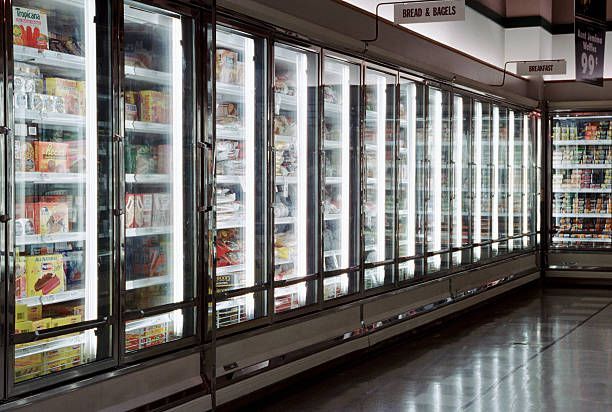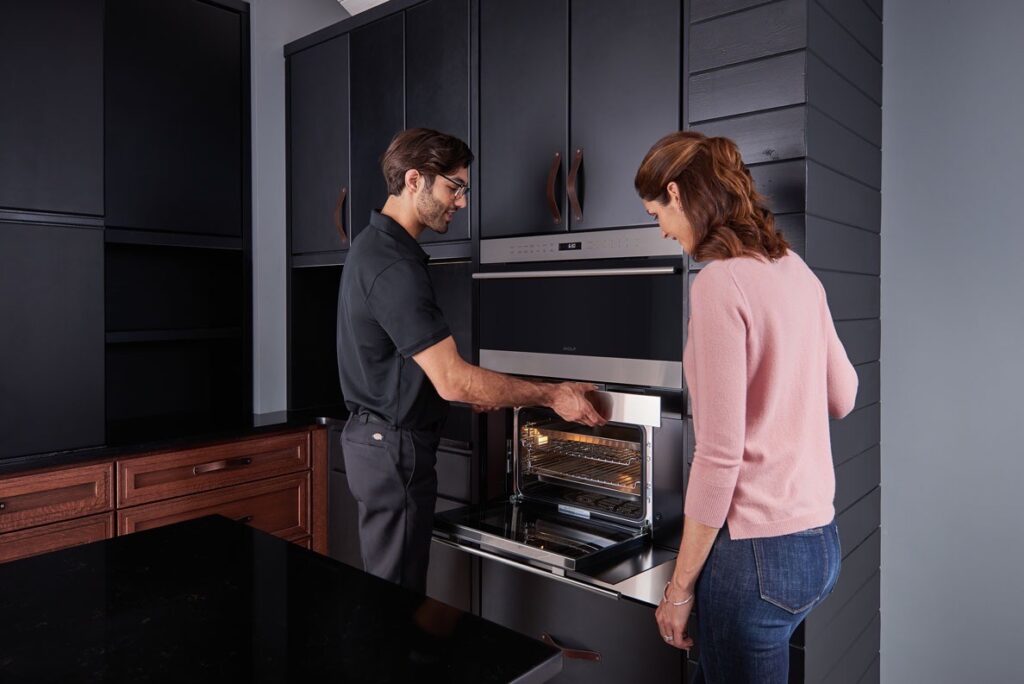The Ultimate Overview to DIY Home Appliance Fixing Techniques
From fridges to dish washers, understanding just how to fix and fix these devices can conserve you time and money. Are you prepared to uncover important strategies that will equip you to take care of repair services with confidence?
Comprehending Usual Home Appliance Problems
When you rely on your home appliances, it can be discouraging when they all of a sudden quit functioning or act up. Recognizing common appliance troubles can assist you repair concerns properly.
If your stove isn't heating, faulty aspects or thermostat problems can be to blame. Dish washers usually experience troubles with drainage, so make certain the filter is tidy and the drain tube isn't kinked.
Likewise, listen for uncommon audios; they frequently suggest mechanical problems. By acknowledging these indications, you can conserve time and potentially stay clear of costly repairs. A little knowledge goes a long way in keeping your home appliances, so stay notified to keep everything running efficiently.
Necessary Tools for DIY Repairs
Before diving right into DIY appliance fixings, it is very important to collect the right devices to guarantee the process goes smoothly. Start with a great collection of screwdrivers, including both flathead and Phillips, as they're vital for opening most home appliances. You'll likewise want a set of pliers for clutching and twisting cables or tiny elements.
Don't neglect a multimeter; it assists you examination electrical parts and identify problems properly. An outlet set is convenient for loosening or tightening screws, while an utility knife can be valuable for opening or reducing cords packaging.
Lastly, think about having a flashlight available to light up dark spaces inside your home appliances. With these vital devices, you'll be well-equipped to deal with different fixings, conserving both money and time. So, collect your equipment and prepare to roll up your sleeves!
Safety First: Preventative Measures to Take
Prior to you begin any type of appliance repair service, it's important to prioritize safety. Ensure you put on personal protective tools, separate the power source, and maintain your work area arranged. These basic preventative measures can aid avoid accidents and guarantee a smoother repair work process.

Individual Protective Equipment
Safety equipment is a necessary component of any Do it yourself appliance repair service job. Steel-toed boots are additionally a clever option, especially when raising heavy devices. Remember, being prepared with the appropriate equipment maintains you secure and focused on finishing your fixing successfully.
Source Of Power Interference
To ensure a safe DIY home appliance repair work, disconnecting the power resource is important. This straightforward step avoids electrical shocks and warranties that you can concentrate on the repair without stressing concerning accidental activation. When you're certain that the power is separated, you can confidently continue with your repair services, understanding you've taken the necessary preventative measures to shield yourself.
Workplace Company
An efficient work area can make all the difference in your Do it yourself appliance repair project. Beginning by clearing your work area of clutter to protect against crashes and diversions. A tidy area not just enhances effectiveness yet also keeps you secure while you work on your appliance fixing.
Step-by-Step Guide for Refrigerator Fixes
When your refrigerator begins acting up, it can be frustrating, but dealing with the trouble yourself can save you time and money. Inspect for typical problems like temperature level fluctuations or unusual sounds. For a loud refrigerator, check the follower and verify it's not blocked.
If there's water pooling inside, examine the door seals for damage or dirt, and clean them if required. For ice build-up, clear the defrost drain. Plug the fridge back in and check it for a few hours when you've attended to the concern. If the issue continues, you might require to change a malfunctioning part, like the compressor or fan electric motor. Remember, do not think twice to consult the handbook or look for expert help if required.
Repairing Cleaning Equipment Problems
Similar to their website fridges, washing equipments can offer their own collection of challenges, but numerous problems can be resolved with a little troubleshooting. If your machine won't begin, inspect the power cable and validate it's plugged in. Next off, inspect the door latch; a faulty lock can avoid the cycle from starting. It might be due to international things stuck in the drum or the drain pump. if you observe uncommon sounds during operation.
Tightening these can often resolve the trouble. Regular maintenance, like cleansing the filter, can stop many problems from arising.
Troubleshooting Ovens and Stoves
How can you repair usual issues with your stove or stove? Beginning by examining the power supply. Make sure it's plugged in and the breaker is not tripped. If it's a gas cooktop, validate the gas valve is open. Next off, examination the heaters: if they do not ignite, clean the igniter and check for clogs in the heater ports.
If your oven isn't home heating, examine the temperature setups and validate the door seals securely. If it's damaged., a defective home heating element could likewise be the culprit; you might need to replace it.
For unequal food preparation, revolve your pans and think about making use of an oven thermometer to confirm precise temperatures. Ultimately, if you hear uncommon noises or scent gas, shut off the device right away and consult a professional. By following these actions, you can determine and resolve lots of common stove and oven problems effectively.
Repairing Dishwashers Made Easy
When your dishwashing machine begins breaking down, it can be irritating, however resolving common problems isn't as tough as it seems. You'll find out step-by-step troubleshooting techniques that will assist you pinpoint the trouble, together with the crucial tools you'll need to tackle repair services on your own. Allow's make fixing your dish washer a wind!
Typical Dishwasher Concerns
While dishwashing machines are created to make your life easier, they can occasionally run right into typical concerns that leave you really feeling frustrated. If your dishwasher's door will not lock, it can be a basic concern with the latch system or door seal. Addressing these issues early can conserve you time and headache down the roadway.

Step-by-Step Troubleshooting
Prior to diving into repairs, it's important to identify the specific issue your dish washer is encountering. If your dishwashing machine will not start, check the power supply and door latch. By systematically resolving each possible problem, you can pinpoint the problem and take the required actions to repair it, making your dishwasher function like new once more.
Essential Repair Service Tools
Having the right devices at your disposal can make all the difference when fixing your dishwashing machine. Do not neglect a bucket or towels for any kind of water spills throughout repair services.
You may likewise want a degree to guarantee your dish washer's appropriately lined up. With these crucial devices, you'll be well-equipped to tackle any dishwashing machine fixing challenge that comes your method.
Frequently Asked Questions
If a Device Is Well Worth Fixing?, exactly how Do I Establish.
To figure out if an appliance's worth fixing, consider its age, repair work costs, and existing worth. If repair services go beyond half the replacement price, you may intend to purchase a new version instead.
Can I Locate Substitute Parts In Your Area for My Device?
Yes, you can typically discover substitute parts locally for your device. Check equipment shops, home appliance service center, or regional classifieds. Don't forget try this to bring the model number to assure you obtain the appropriate component!
What Usual Mistakes Should I Prevent When Repairing Appliances?
When fixing home appliances, prevent hurrying via diagnostics, ignoring security preventative measures, or using inaccurate devices. Don't avoid checking out handbooks or enjoying tutorials; they give essential advice. Hold your horses and complete you could look here to assure successful repairs and avoid more damages.
Just how Long Does a Normal Do It Yourself Home Appliance Fixing Take?
A common do it yourself home appliance fixing typically takes one to 3 hours, depending on the intricacy. You'll want to gather your devices and materials first, and comply with directions thoroughly to prevent unneeded hold-ups.
Exist Any Type Of Warranties for DIY Home Appliance Repair Works?
When you take on DIY home appliance repairs, guarantees typically don't cover your work. Some producers could recognize warranties for parts you change. Always examine your device's warranty terms before starting any repairs to stay clear of concerns.
Prior to diving into Do it yourself appliance repairs, it's important to collect the right tools to ensure the procedure goes efficiently.Before you begin any type of device repair service, it's crucial to prioritize safety.To ensure a secure DIY device fixing, detaching the power resource is crucial.A well-organized work location can make all the distinction in your DIY appliance repair work task. Constantly examine your home appliance's guarantee terms before beginning any repair work to stay clear of concerns.